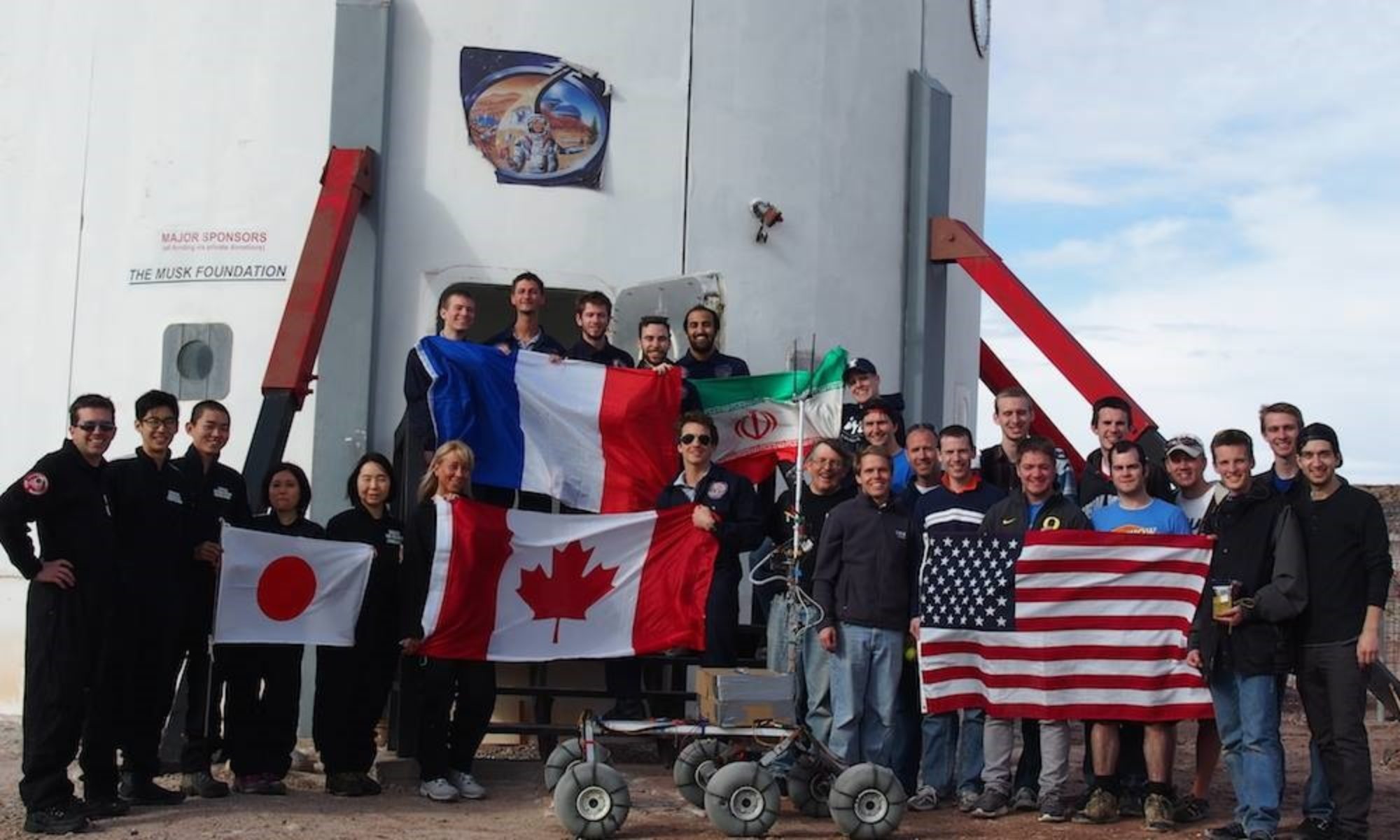Crew 280 Journalist Report 25-04-2023
Author: Núria Jar, Crew Journalist
The wind is a constant presence at the Mars Desert Research Station (MDRS). The sound of the canvas flapping against the corridors of the MDRS serves as a constant background melody for the crew living inside the Hab. Dust storms are common on Mars and they can last for weeks, sometimes even months, covering the surface of the Red Planet. Precisely, this is one of the most important meteorological phenomena of Mars.
Despite the high winds, two crew members from Hypatia I conducted an extravehicular activity (EVA) because it was deemed safe to do so. Whether staying inside the base or going out, preparing for an EVA is always a special moment for the crew members. They have to help each other in suiting up, checking the equipment and communication effectively before heading out. Playing music through the radios has quickly become a tradition while the crew members who are about to conduct an EVA are waiting in the airlock to depressurize. Five minutes can feel like an eternity in the cramped space of an airlock, sandwiched between two doors.
While the two crew members were outside conducting their EVA, the remaining crew stayed inside the base to continue their ongoing experiments. One such experiment is called the “Martian bottle”, which aims to recycle water as a means of promoting self-sustainability. Water is a scarce resource on Mars, and the crew is trying to generate drinkable water from the used water in the GreenHab using the bottle cap Light Pills, designed by Hypatia I crew member Helena Arias.
Throughout the day, there were delayed communications between Mars and Earth. This afternoon, the two back-up crew members of Hypatia I, Helena Arias and Anna Bach, were busy in Barcelona discussing the initial days of the mission at the MDRS. They shared their insights and impressions about the mission at a gathering event held at the Fabra Observatory. The event was a success and people in Catalonia are interested in learning more about the Hypatia I mission, but the delay between the two planets is challenging.
Meanwhile, the crew members shared their dreams for the future after their experience at the MDRS. The crew’s daily routine at the station is governed by the rhythm of Mars, yet their aspirations reach far beyond. Ad Astra, Per Aspera!

